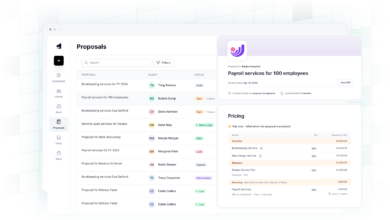How to Optimize EV Charging Infrastructure for Multi-Unit Dwellings

As electric vehicle (EV) adoption continues to rise, the demand for convenient charging applications in multi-unit dwellings (MUDs) such as apartment complexes and condominiums is expected to grow. However, installing and optimizing EV charging infrastructure in these kinds of settings presents unique challenges, from electrical capacity limitations to shared parking arrangements.
For property managers, homeowners’ associations (HOAs), and developers, providing efficient EV charging goes a long way in increasing property value, attracting eco-conscious tenants, and working toward sustainability goals. This guide discusses critical strategies to optimize EV charging infrastructure in multi-unit dwellings.
1. Assess Property Needs and Demand
Before you can install the EV chargers, the specific needs of the property must be evaluated. Some of the aspects to consider are:
- The number of EV drivers – Residents can be surveyed to understand present and future demand.
- Parking layout – Assigned parking, shared parking, or mixed use.
- Electrical capacity – A review of the building’s existing electrical infrastructure and capacity to upgrade.
- Budget and funding options – Evaluate costs, consider government incentives, and examine the potential generation of revenue from charging fees.
A feasibility study conducted by an EV charging expert will put forth a tailor-made plan where efficiency is optimized and costs are aligned to the best possible manner.
2. Decide on the Right EV Charging Stations
Selecting the correct type of EV chargers is the most important for optimizing the infrastructure. EV Chargers can mainly be classified into three levels:
- Level 1 Charging (120V) – Charges slowly with a normal household outlet, adding approximately 4-5 miles of range per hour. Ideal for overnight charging but unsuitable for high-demand use.
- Level 2 Charging (240V) – Provides faster charging (up to 25 miles of range an hour) and is the best option for MUDs. These stations are compatible with all EVs and are best if several users require access during the day.
- DC Fast Charging (480V+) – Offers fast charging up to 80% in 30 minutes, though requires vast electrical capacity and higher installation costs, making it less common for residential use.
Level 2 chargers are the most reasonable cost solution, with appropriate charging speed and accessibility for the MUD.
3. Optimize Charger Placement and Accessibility
Correct placement of EV chargers provides simple access for the residents while maximizing their utility. Important considerations are listed below:
- Proximity to electrical panels – Limits installation costs as wiring length is reduced.
- Equitable access for all residents – Situate chargers in common areas or assign one specific charger per dedicated parking space.
- ADA compliance – Accessible for all residents with disabilities.
- Forward thinking – Scalable with growing EV demand.
Smart charging stations with networked capabilities allow property managers to monitor, schedule, and prevent charger hogging.
4. Address Electrical Load Management
The enormous challenge in MUDs is the management of the electrical capacity. Without a proper load management system, adding several EV chargers could lead to overloading the electrical system of the building. Solutions include:
- In an interconnected load-share scheme, power to several chargers is shared, which prevents breach of capacity limits.
- TOU Pricing encourages the charging of EVs during off-peak periods to avoid putting stress on the grid and to save charging cost.
- Panel upgrades and dedicated circuits – Electrical capacity is expanded if need be.
A licensed electrician will be a big help in determining the approach that will integrate EV charging with no disturbance to other building workings.
5. Implement an Equitable Billing and Payment System
How residents will pay for EV charging is essential to cost recovery and fairness. Common billing methods are:
- Flat monthly fees – Applicable in properties with assigned chargers.
- Pay-per-use pricing – Where residents will be billed according to their consumption of electricity.
- Subscription models – Unlimited charging for a flat fee.
Many smart EV chargers integrate with billing systems that allow automated payments and detailed usage tracking.
6. Look For Available Incentives and Rebates
Government programs and utility rebates can effectively bring down the cost of EV chargers. Available incentives include:
- Federal tax credits – The Alternative Fuel Vehicle Refueling Property Credit covers as much as 30% of installation costs.
- State and local rebates – Regional differences exist in grants and rebates for multi-unit charging stations.
- Utility company programs – Many electric utilities provide discounts or free infrastructure upgrades for properties installing EV chargers.
To find out more about what incentives may be available and how to facilitate making such applications, property owners can look to Apex Charger for insights.
7. Formulate Clear Policies and Plans for Maintenance
Use sound policy and active maintenance to keep up the infrastructure relating to electric car charging. These form a few fundamental steps:
- Set usage guidelines: Create rules for charging use.
- Regular maintenance checks: If the chargers are working, schedule checks.
- Handling disputes: Establish how to solve residents’ complaints relating to charging access and fees.
Maintenance becomes even easier and more reliable over time through contracting a reputable EV charging service provider.
8. Promote EV Charging Availability for Renters
Promoting EV chargers converts into tenancy advantages for rental apartments and condos. Examples of such promotion include:
Such as tenancy using the environment – Advertising listings of rentals in a green dimension.
Such as partners with related businesses – Offering charging to the public.
Conduct an event about electric vehicles – Sensitize residents about the same.
Such properties are likely to attract tenants and buyers as electrification becomes more common with Americans switching to electric vehicles.
The Future of EV Charging in Apartment Complexes
Planning, investment, and long-term strategy are prerequisites for optimizing EV charging infrastructure in multi-unit dwellings. It helps property owners provide reliable and scalable charging solutions for their residents to select adequate equipment, manage electrical load, exploit incentives, and implement just use policies.
Apex Charger provides industry-leading expertise in creating effective charging infrastructure tailored to the needs of property managers and developers worldwide. For expert guidance and customized EV charging solutions, contact Apex Charger.





